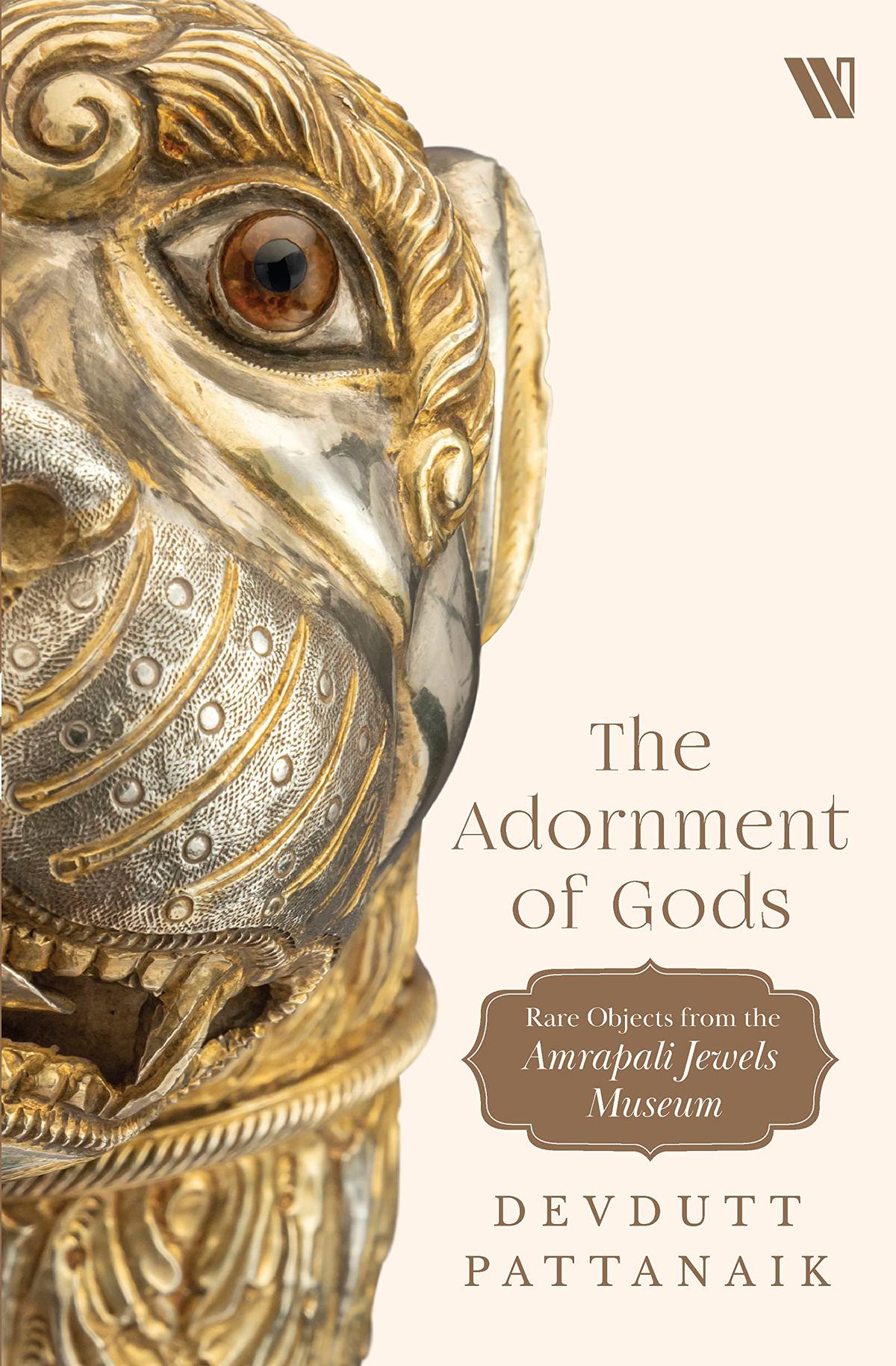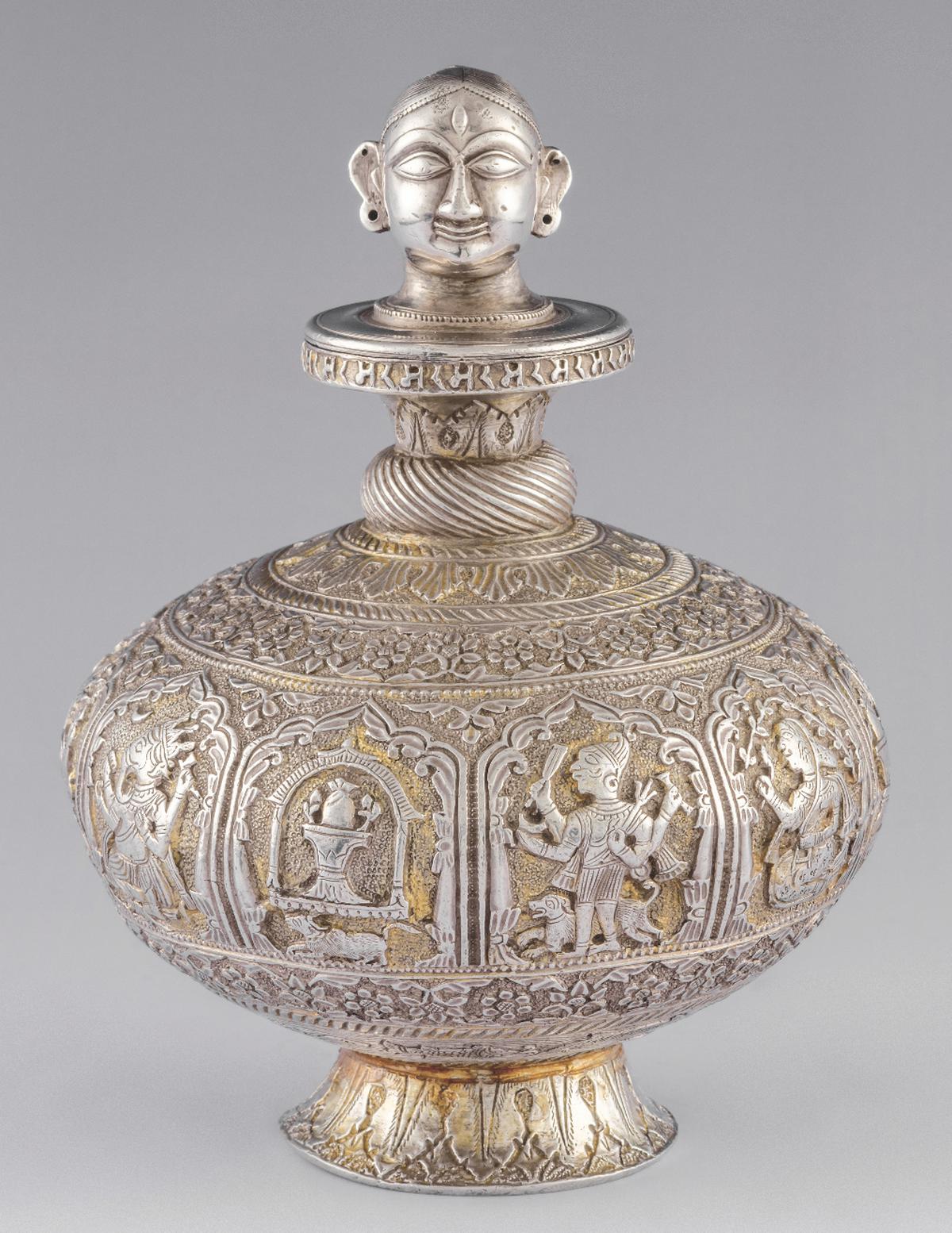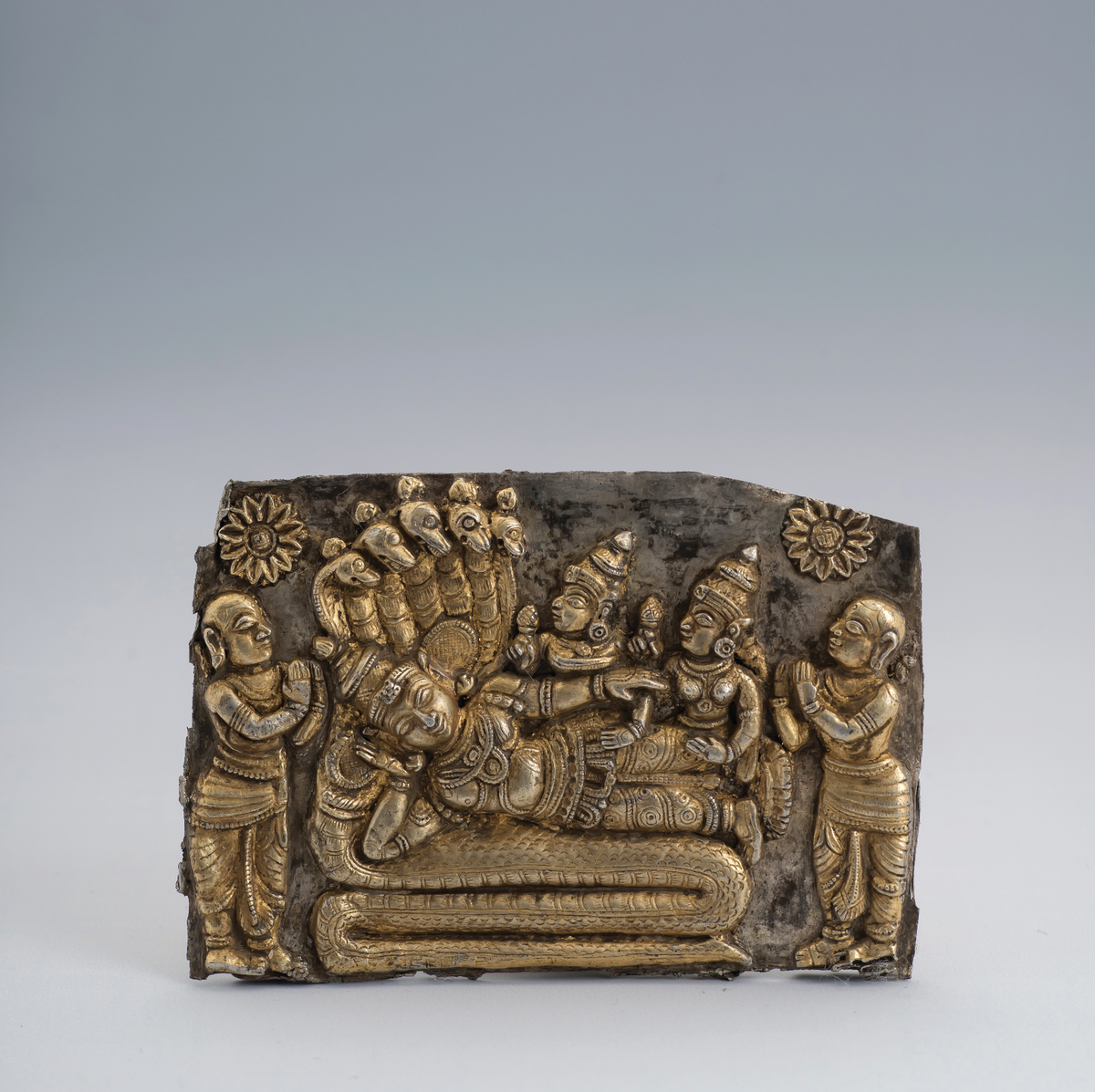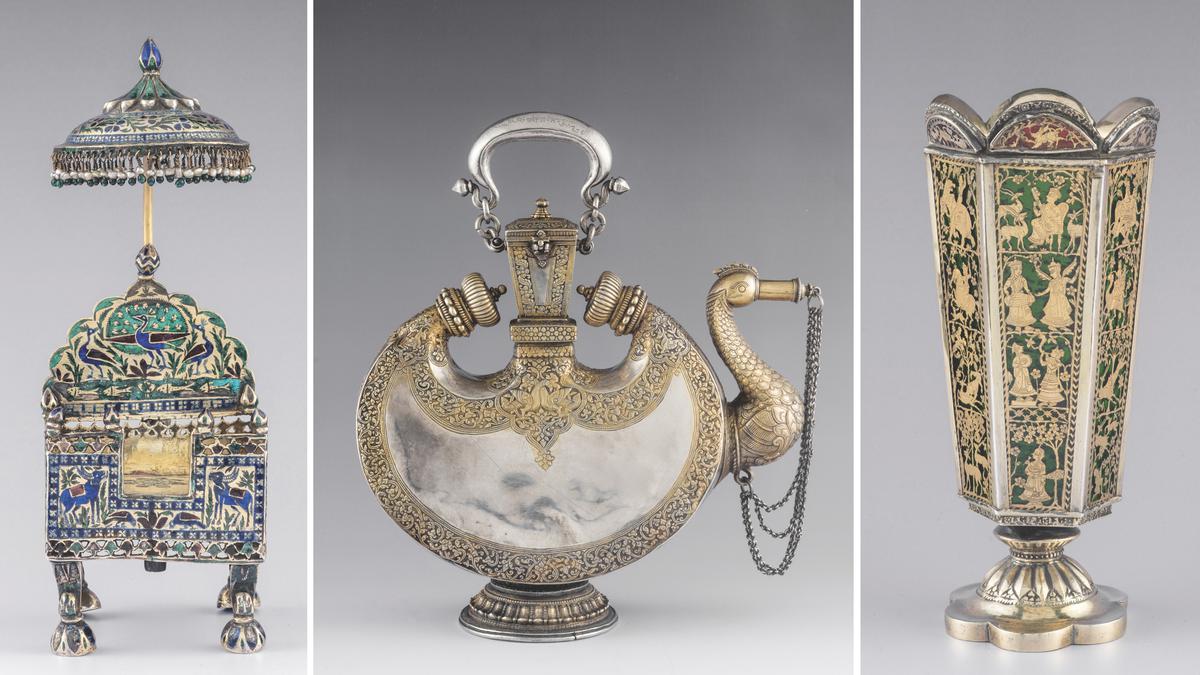(L to R) A silver gilded and enamelled miniature throne; a swan neck ritual flask; and a silver and gold vase created using the Thewa technique of Rajasthan.
Human beings need symbols to comprehend the sacred — a pot, spoon, tray or platter, a plaque or a piece of jewellery provide a glimpse into the mystery and power of the divine. Thus, in all our sacraments, simple elements from life are brought forward and made sacred. Elements that sustain life — the earth, sky, wind, water, fire, sun and moon — are expressed in the form of thrones, shrines, flags, flasks and lamps.

In The Adornment of Gods, scholar and mythologist Devdutt Pattanaik features such rare objects from the Jaipur-based Amrapali museum’s collection. The book is fascinating on multiple levels. First, the beautiful collection and its manifestation in various styles and motifs — the brainchild of collectors Rajesh Ajmera and Rajiv Arora.
This is then taken to another level by Pattanaik, who delves beyond form and function to assess the complex meanings embedded in each object and the very purpose of its existence. Dividing the book into five sections, these items of everyday use are studied from the perspective of the elements, life, people, and goddesses and gods.
Gilded flasks and footwear
A silver gilded ritual flask features flowers, a swan, the ‘gandeberunda’ or two-headed bird as well as Nandi bulls. Pattanaik takes the reader on a journey that begins and ends with water, and its all-encompassing role on Earth. Life is nurtured by the environment — flora, fauna, even mythological creatures take up residence in a variety of objects ranging from a mere water pump decorated with beautiful vegetal motifs, with the mythical makara, guardian of the sacred rivers, positioned on the handles, to the magnificent lion-headed processional sceptre that graces the cover of the book.

A water pot, called the Gangajali, used to store water from the Ganga river. The lid that screws on to the neck has a sculpted face of Goddess Ganga.
Functional items like spoons, footwear, trays and even items of adornment are elevated to the divine. Nothing is what it appears to be, as Pattanaik reveals, layer by layer, the multifaceted character of each of these items in the context of India’s vast and ancient mythological tradition.
The last two sections of the book are dedicated to goddesses and gods. The life-nurturing attributes of the Ganga and other sacred rivers are expressed by a majestic water pot. Although meant to just store water, the surface is decorated in immense detail with Shiva and Shaivite symbols. The holy trinity of Brahma, Vishnu and Shiva, and a host of other demi-gods form the subject of the final section. They are manifested in the form of icons, and they adorn plaques and water sprinklers, each object giving life to the invisible.

A silver plaque depicting Vishnu on the serpent Shesha, flanked by Lakshmi.
The Adornment of Gods awakens a new understanding of the devotional objects that grace several households in this vast and diverse country where faith, devotion and atonement are all expressed through objects. Purely functional at one glance, style, design, motifs and craftsmanship combine to raise each object to the realm of the divine. It is through these objects that “ideas reached the farthest corner of the land”, writes Pattanaik.
The writer is a jewellery historian, curator and cultural consultant.






